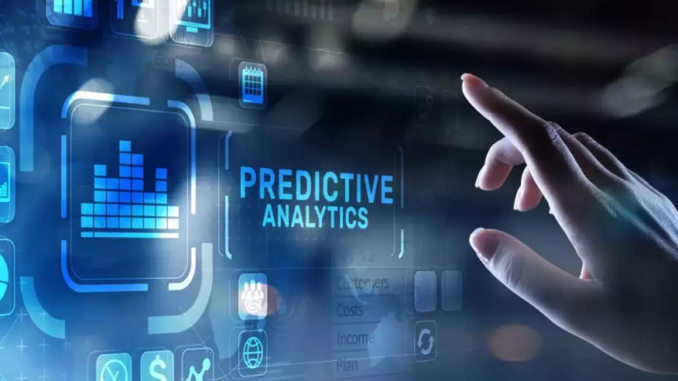
In an era driven by data, predictive analytics stands as a formidable force, employing statistical models and machine learning algorithms to forecast future events and trends. This exploration delves into the intricate world of predictive analytics, unraveling its methodologies, applications, and the transformative insights it offers. Before delving into the depths of predictive analytics, we’ll first explore the foundational step of compressing Word documents to PDF, a process that aligns with the efficiency and optimization inherent in predictive analytics.
The Preliminary Step: Compression from Word to PDF
The Preliminary Step: Compression from Word to PDF serves as the foundational gateway to the world of predictive analytics, emphasizing the essential role of efficient document handling. Before delving into the intricacies of forecasting with statistical models and machine learning, we recognize the significance of compressing Word documents to PDF—an initial stride that aligns with the optimization and accessibility inherent in the predictive analytics process.
Efficiency in Data Handling
The journey of predictive analytics begins with the efficient compression of Word documents to PDF. Compression not only reduces file sizes but streamlines data handling, making it easier to manage and transfer extensive datasets—an essential precursor to effective predictive modeling.
Ensuring Data Portability
Compression contributes to ensuring data portability, a crucial aspect in predictive analytics where accessibility to historical data is paramount. Converting documents to compressed PDFs facilitates the seamless transfer of datasets across various platforms, laying the groundwork for robust predictive modeling.
The Essence of Predictive Analytics
“The Essence of Predictive Analytics” lies in the marriage of statistical models and machine learning algorithms, forming a dynamic foundation that unlocks transformative insights into future events and trends. In this section, we delve into the core methodologies that define predictive analytics, exploring how these elements work in unison to discern patterns, make accurate forecasts, and elevate decision-making processes across diverse industries.
Statistical Models
Predictive analytics relies on a foundation of statistical models to analyze historical data and identify patterns. These models, ranging from linear regression to time series analysis, form the backbone of predictive insights, allowing for the extrapolation of future trends based on past occurrences.
Machine Learning Algorithms
At the forefront of predictive analytics are machine learning algorithms that adapt and evolve with data inputs. Supervised learning, unsupervised learning, and ensemble methods enable predictive models to discern complex patterns, enhancing the accuracy and depth of forecasts.
Applications Across Industries
Applications Across Industries showcases the versatility and impact of predictive analytics, highlighting its pervasive influence in diverse sectors. In this section, we explore how predictive analytics transcends boundaries, offering invaluable insights into financial markets, revolutionizing healthcare predictions, and reshaping marketing strategies. The applications span a spectrum, demonstrating the far-reaching benefits of harnessing predictive analytics in solving industry-specific challenges and optimizing operational efficiency.
Financial Forecasting
In finance, predictive analytics is instrumental in forecasting market trends, stock prices, and economic indicators. Institutions leverage predictive models to make informed investment decisions and manage financial risks effectively.
Healthcare Predictions
Predictive analytics transforms healthcare by predicting disease outbreaks, identifying at-risk patients, and optimizing treatment plans. From personalized medicine to resource allocation, these insights enhance patient care and operational efficiency.
Marketing and Customer Behavior
Marketers employ predictive analytics to anticipate customer behavior, personalize marketing campaigns, and optimize advertising strategies. By analyzing past interactions, businesses can tailor their approach to align with future consumer trends.
Overcoming Challenges in Predictive Analytics
Overcoming Challenges in Predictive Analytics addresses the nuanced hurdles that accompany the pursuit of accurate and reliable predictions. In this section, we delve into the intricate landscape of predictive analytics, navigating challenges such as data quality and ethical considerations. Understanding and surmounting these obstacles are essential for refining predictive models, ensuring their efficacy in providing actionable insights for decision-makers across various domains.
Data Quality and Accuracy
The accuracy of predictive models is contingent on the quality of input data. Ensuring data accuracy and addressing issues such as missing or skewed data are ongoing challenges that analysts navigate to enhance the reliability of predictions.
Ethical Considerations
As predictive analytics becomes more pervasive, ethical considerations regarding data privacy, bias, and transparency come to the forefront. Striking a balance between innovation and responsible data usage remains a challenge in the evolving landscape.
Future Frontiers: What Lies Ahead
Future Frontiers: What Lies Ahead beckons towards the horizon of innovation within predictive analytics, offering a glimpse into the evolving landscape of possibilities. In this section, we explore emerging trends and technologies that shape the trajectory of predictive analytics, envisioning a future where Explainable AI and integration with the Internet of Things (IoT) redefine the boundaries of foresight and decision-making.
Explainable AI
The future of predictive analytics involves advancements in Explainable AI, allowing models to provide transparent insights into their decision-making processes. This fosters trust and comprehension, especially in critical domains like healthcare and finance.
Integration with IoT
The Internet of Things (IoT) will play a pivotal role in enhancing predictive analytics by providing real-time data streams. The integration of IoT-generated data will empower models to make more accurate and timely predictions across various sectors.
Conclusion
Predictive analytics stands as a beacon in the data-driven landscape, illuminating the path to informed decision-making and proactive strategies. From the foundational efficiency of compressing Word documents to the intricacies of statistical models and machine learning algorithms, predictive analytics continues to redefine how we approach the future. As we navigate challenges and embrace future frontiers, the transformative potential of predictive analytics remains boundless, offering a glimpse into a future where foresight is as essential as hindsight.

Leave a Reply
You must be logged in to post a comment.